Saintly persons belong to entire mankind. They do not represent any single caste or creed. They cherish universal well-being; and persuade humanity to follow the path of Truth and Equality. Guru Ravidass Ji was a reputed enlightened saint of medieval Age. Influenced by the truthfulness of his sacred sermons of worship of God, devotees from all castes became his disciples. After having learnt of his fame as an Emancipated saint, a wealthy Seth visited his place to hear his religious discourses. On that day Guru Ji threw light on importance of human birth. It was elucidated that our rare birth is a result of our benevolent deeds in our previous life.
Dulabh janam pun phal payo
The Almighty should, therefore, be worshipped to enlighten our this life. Other than his Name all show of rituals is false.
At the end of Sat Sang (religious discourses) Guru Ji distributed nectar from shallow earthen pot lying near his seat. It was offered to rich Seth also. On observing it as dirty water, he threw nectar behind his head and back instead of drinking it. It fell partially on his clothes and partially on the floor.
The gathering dispersed. The Seth came back home. Thinking that his clothes had been spoiled and polluted by dirty water given by Guru Ravidass Ji, he took off the clothes and donated to a poor man who was suffering from leprosy.
The poor man wore the clothes donated by the Seth. The clothes bore blots of nectar given by Guru Ravidass Ji to the Seth. The poor man felt soothing effect on his body as soon as he put on the clothes. The wounds of leprosy started healing up. He started having sound sleep at night. In a short period, the poor man became completely healthy as if he had never suffered from the disease. On the other hand, leprosy developed on the body of the Seth. He got lot of treatment from highly qualified and experienced Vaids and Hakims but the disease continued becoming serious. The wounds of leprosy became wet. Continuous intense pricking pain upset the psyche of the Seth and plunged him in gloom. He sat alone and pondered as to whether the disease was due to disgrace of the saint. He went to Guru Ravidass Ji and apologized for throwing nectar on his earlier visit. Guru Ji forgave him. He got relief from the disease automatically within a few days. Thereafter, the entire family of the Seth became Guru Ji’s disciples.
According to Hindu scriptures, worship of God was the sole right of Brahmins only. On the contrary Shri Guru Ravidass Ji, who belonged to Chamar caste, also started worship of God. He started blowing conch-shell and ringing the bell. He was enlightened and had realized God. He simplified mode of worship and discarded rituals. His religious discourses were most convincing and truthful. As a result, cutting across caste barriers, large number of people became his followers. All this irked the Brahmans. It was a challenge not only to their priestly supremacy but an adverse impact on their source of livelihood also. Brahmans forbade him from worshipping God. But he did not relent and took worship as his birth-right. At last Brahmans approached the then Kashi Naresh Hardev Singh and complained against Guru Ravidass Ji for practicing worship of God. Guru Ravidass Ji was summoned to appear in the court of the king. Guru Ji explained in the court that worship is everybody’s right and that he is the truthful worshipper of God. The Pandit priests and Guru Ravidass Ji were asked to bring their Thakur (Idol) whom they worshipped, to the river Ganga on the appointed day. Only that party will be adjusted as the true worshipper whose Thakur floats in the river.
Brahman priests and Guru Ravidass Ji arrived at Rajghat of the river Ganga as directed by the king. The Pandits had brought small Thakur stones wrapped in the cotton. But Guru Ravidass Ji was stoutly carrying a 40 kg heavy-weight square stone on his shoulders with unshakeable confidence. A huge crowd of residents of Benaras gathered on Rajghat of river Ganga to witness the fateful and decisive event. The king and the courtiers also reached the spot. The Brahman priests who were the aggrieved party were given first turn to float their Thakur stones in the river. All the tall fleshy, head shaven, Janju (thick thread) wearing and Tilak applied Brahman priests blew conch-shells and fumbled Vedic Mantras and gently placed their Thakur stones in the river one by one. To their great dismay, all their Thakur stone gently sank down deep into the water. All of them bowed down their heads. The on-lookers were stunned to see the sinking Thakurs of Brahmans.
Then was the turn of Guru Ravidass Ji, He lifted his heavy-weight stone on his shoulders. There was thaw. All eyes were focused on Guru Ji and the stone he carried. Curiosity prevailed. It was a decisive moment. In case his stone also sinks, there will be further gloom for the lowly. Guru Ji closed his eyes and stood erect. His face blushed and with all humility he prayed to God.
Meri sangat poch soch din raati
Mera karam kutilta janam kubhati.
Raam gosaeeaa jeea ke jeewnaa
Mohi naa bisaarho main jan tera. (Rahaao)
Meri haro vipt jan karo subhaaiee
Charn naa chhadoo sareer kall jaaiee.
Kaho Ravidass pario teri saabha.
Beig milho jan karu naa bilanbaa.
At this moment there was dazzling light in the sky. All the on-lookers expected something miraculous. Guru Ji moved ahead to the water and gently placed the stone in light-blue transparent water of the river. To great astonishment of the on-lookers the stone (Pathri) floated majestically. Guru Ji gently smiled and thanked God for coming to his rescue. There was spontaneous applause from the viewers.
The Pandits had failed in the test. They had been proved false worshippers. The on-lookers made a mockery of the Pandits. The king announced victory of Guru Ravidass Ji as a Truthful worshipper. All respectfully fell at his feet. Guru Ravidass Ji was seated in a golden palanquin and moved in a procession in the city. The minds of the masses were changed and they developed regard for him and the lowly. They were blissful after having glimpses of Guru Ji.
A gala-function was organized after sometime in the honour of Guru Ravidass Ji to celebrate his victory. He was seated at a raised cushioned and beautiful seat decorated with jewels. All the courtiers, diwans, intelligentsia, chieftains and selected people former the gathering. All spoke high of Guru Ravidass Ji. The king and member of his family instantly became followers of Guru Ji. At the end of the functions sweets were distributed. The people touched sacred feet of Guru Ji and went back home singing his praise. This event was recorded in the annals of court in calligraphic golden letters.
It was an unprecedented and eventful day for the untouchables. New glorious history was created for them on that fateful day. Truth had come out victorious against falsehood. False beliefs had been belied!
Ever since his childhood, Guru Ravidass Ji had religious bent of mind. His talks were not conventional. Even his family members were astonished at his strange actions. He was an undaunted boy. When he became adult, he started worshipping God like the Brahmans. He blew conch-shell applied Tilak (mark) on forehead wore Janju (sacred thread) and tied Dhoti (cloth sheet used instead of trousers) like the Brahmans. He vehemently condemned caste system and untouchability. He preached equality, secularism, truthfulness, oneness of God and human rights.
Since his message was of universal brotherhood, people of all shades irrespective of caste, sex or creed came to listen his sermons. His following was fast increasing. At this, the Brahmans and Piran Ditta Mirasi planned a strategy to kill Guru Ravidass Ji. A meeting of several young-men was to be arranged in desolate and lonely place away from the village where Guru Ravidass Ji would also be invited. In the course of discussion, Guru Ravidass Ji would be manhandled and killed. Guru Ji knew it before hand due to his spiritual power. The meeting started at the venue. In course of discussion a group of persons caught hold of him and tried to kill him. At this juncture, by virtue of his spiritual powers, Guru Ravidass Ji cast his appearance on one Bhalla Nath. As a result, Bhalla Nath, their companion, looked to others as Ravidass. They killed him. After a short while, Guru Ji blew conch-shell at his hut. The killers were astonished to hear the sound of the conch-shell. They went back to the spot of the scuffle and found that Bhalla Nath had been killed instead of Guru Ravidass Ji. They repented and prayed Guru Ravidass Ji for forgiveness.
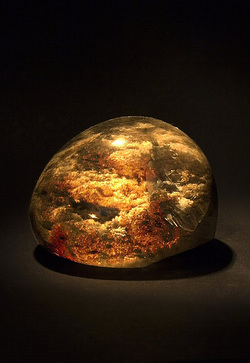 Guru Ravidass Ji was a great saint of medieval Age who remained contented with his minimum belongings and resources of livelihood. He preferred to lead a poor man’s life. Many kings and queens and other rich people were his disciples but he never expected and accepted any wealthy offers. God deemed it proper to give him a philosopher’s stone. One day God, in the guise of a saint, visited Guru Ji’s hut and offered him a philosopher’s stone with whose touch iron would be converted into gold.
The saint asked him to construct a palatial building with money earned with converted gold. Suitable boarding and lodging arrangements could also be made for visiting Sadhus. Guru Ji listened all this. After a pause he politely refused the offer with the plea that he prefers to be poor and that he would serve the visiting Sadhus with his available resources. Even the repeated offers of the philosopher’s stone by the Godly saint were not accepted by Guru Ji. At last the saint thought that he should leave the philosopher’s stone in his hut and he could utilize it later. He requested Guru Ji to keep it with him and he would collect it from him or return. Guru Ji told him to keep it in a particular place in the hut. The saint kept that stone there.
The saint came back after 13 months. He asked for philosopher’s stone. Guru Ravidass Ji asked him to collect it from the place where he had kept. He had not utilized it. The saint wondered on his tenacity of non-involvement in worldly wealth. The saint was very happy and took away the philosopher’s stone, went out and disappeared.
Guru Ji has taught us a lesson that one should not be greedy. One should work hard for earning livelihood.
A Brahman boy named Ram Lal was a close friend of Guru Ravidass Ji. For most of the time they remained together and played together. The Brahman boy did not observe untouchability also. He loved Guru Ji very much. The Brahmans were jealous and could not tolerate that a Brahman boy should play with an untouchable boy. They emphatically impressed upon his parents to detract their son from moving and playing with a boy of low-caste. But Ram Lal obeyed none.
The Brahmans being jealous of Guru Ravidass Ji, complained to the king about the friendship of Ram Lal (a Brahman) and Guru Ravidass Ji (an untouchable). The king called Ram Lal to the court. He was decided to be killed by throwing before a hungry lion. As such, he was thrown before a hungry lion. The lion thundered. Ram Lal cried at his high pitch and fainted. When the lion came near the boy it became calm. It looked around. Instead of killing the boy it looked frightened. It saw Guru Ravidass Ji sitting near and protecting Ram Lal. The lion bowed before Ram Lal and receded. Ram Lal came to senses. He got up and came straight to his friend Guru Ravidass Ji and thanked him for his protection from the lion.
The King and Brahmans felt ashamed. The King realized that Ram Lal has been protected by some spiritual power. The king freed him.
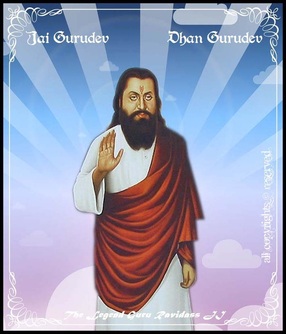 In his childhood when Guru Ravidass Ji was studying in the Pathshala of Pt. Sharda Nand, he developed friendship with his son. They used to play together.
One day in game of hide and seek, Guru Ravidass Ji won and his friend lost the game. As a result, his friend was to seek hidden Ravidass Ji in his next turn. By this time night had fallen. It was munually agreed that the friend (son of Pt. Sharda Nand) would play his turn of seeking Guru Ravidass Ji tomorrow in the morning.
In the next morning, Guru Ravidass Ji, along with other play-mates waited for his friend for a long time but he did not turn up. At last Guru Ravidass Ji himself went to his residence with other play-mates.
The parents and other members of family of friend of Guru Ravidass Ji were weeping. The neighbours and others were also sitting in remorse. Guru Ravidass Ji enquired as to what had happened. He was apprised that his friend (son of Pt. Sharda Nand) had died during night. Guru Ji wondered as to why he had died without playing his turn of seeking Guru Ji in the game of hide and seek. He wanted to see his friend. Pt. Sharda Nand took Guru Ravidass Ji along to the place where dead body of his son was lying. In a friendly tone, Guru Ravidass Ji, asked his friend that it was not the time to sleep and he should get up and play his turn of seeking him in the game of hide and seek. By virtue of spiritual powers of Guru Ravidass Ji, His friend became alive. He got up and was willing to play. His parents and others were astonished. They were happy again.
The parents and relatives of the friend of Guru Ji and others bowed at sacred feet of Guru Ji and thanked him.
Pt. Sharda Nand ran his Pathshala in his house. Guru Ravidass Ji was put to his Pathshala (School) by his revered parents. Many other casteist people tried to restrain Pt. Sharda Nand from admitting in his Pathshala and teaching Ravidass Ji – a low caste boy. He was a wise man he realized from his face that the boy Ravidass Ji appeared to be a godly boy. In utter disregard of the pressure of casteist people, Pt. Sharda Nand admitted Guru Ravidass Ji and started teaching him. He was a sober and promising student. When he taught him the letters of alphabet, Guru Ravidass Ji expanded and spoke poetic lines, originating from the particular letter, signifying Glory of God.
Man re! chal(i) chatsar parhaoon
Chit(u) kagad kar(i) mas(i) nainan ri,
A-agyan chhanr(i) man moorikh,
Aa-aasan achal lagaoon.
I-ila pingla khol kivrya,
Soon(i) samadh rakhoon.
U-ur mainh ram h(i) rakhoon,
Nainan mainh basaoon.
M-mer(i) taj(i) raam naam mil(i),
Param tatt kau paoon.
R-ran raam moh(i) guru deenhau,
Nanh(i)ih(u) mantar visraoon.
Kahai Ravidass rrankaar japthin(i)
Bhau sagar(u) tar(i) jaaoon.
All this had great influence on Pt. Sharda Nand, his teacher. He realized that boy Ravidass Ji was spiritually enlightened since beginning. Although Guru Ravidass Ji was still a boy, yet Pt. Sharda Nand had developed deep regard for student Ravidass Ji.
Sometime back the idols of the mandir had come to the lap of Guru Ravidass Ji and went back to the mandir as directed by him. This was known to every body in Benaras. The Brah mans did acknowledge the divine enlightenment of Guru Ji. Even the king had become his disciple. But the Brahmans nurtured jealousy against Guru Ravidass Ji. They always talked ill of him on one pretext or the other. King Nagar Mal invited Guru Ji for lunch. Other dignitaries were also called. The Brahmans who were jealous of Guru Ji, struck a hoax with the acrobats for which heavy payment was promised. They wanted to denigrate Guru Ji in the eyes of the king and others. The acrobat was not likely to be paid liberally by the guests; and the acrobat was to talk ill of Guru Ji holding his presence responsible for their poor earnings. The acrobat started his tricks after the lunch. First of all Guru Ravidass Ji placed 10 gold mohars in their thaal. Guru Ji’s disciples and well wishers gave liberal amount to the acrobat. As a result he earned more amount than that was to be paid by the Brahmans. Instead of condemning Guru Ji the acrobat highly praised him. Wherever they went they eulogized Guru Ji. The Brahmans could not succeed in their insidious designs against the saint.
Bibi Bhanmati of Multan (now in Pakistan) was a pious lady who remained busy in thakur pooja for major time of the day. However, she did not have any enlightenment. Her mind remained upset. Somehow, she heard of fame of Guru Ravidass Ji of being divinely enlightened saint. She was told that if she aspires for supreme spiritual bliss, she should go to Guru Ravidass Maharaj Ji and seek his blessings. Bibi Bhanmati along with her husband reached Guru Ji’s place at Benaras. They bowed at the sacred feet of Guru Ji. Incidentally, Gorakh Nath had also come to Guru Ji for goshti. Gorakh Nath tried to take away stealthily spiritual powers of Guru Ravidass Ji but he failed to shake Guru Ji. Guru Ji spared time for Bibi Bhanmati. She told Guru Ji her spiritual and mental position. Guru Ji recited following shabad:
Har(i) har(i) har(i) har(i) har(i) har(i) hare
Har(i) simrat jan gaye nistar(i) tare (Rahao)
Har(i) ke naam kabir ujjagar.
Janam janam ke kate kagar.
Nimat naamdeo doodh peeaia.
Tuo jag janam sankat nahi aaya.
Jan Ravidass ram rang raataa
Eiou gur prasad narak nahi jataa.
When Bibi Bhanmati understood the meaning of the shabad, she was highly impressed with divine enlightenment of Guru Ji. She was moved. She humbly prayed to Guru Ji for initiation. Guru Ji blessed her and asked her to chant the Name of God as Har(i) har(i) har(i) har(i) for attainment of supreme bliss and to avoid the pains of transmigration. She became disciple of Satguru Ravidass Ji.
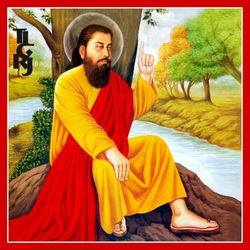 Guru Ravidass Ji was an institution in himself. He wanted to make amends in the social and religious system. He set out for spreading his teachings to far off places. Guru Ji travelled to distant places to spread his message. Due to discrimination the spots built in his memory have been destroyed. Today there is no remnant showing his visit to any distant place. He not only wrote amritbani but also travelled all corners of the countries, as below, to make common man understand his philosophy of removing caste system, discrimination, ignorance, illiteracy, poverty, illusion.
Udasi – 1 1. Ranipur, Malpi, Maadhopur, Bhagalpur, Naraingarh, Kalpi and Nagpur.
2. Barhanpur, Bijapur and Bhopal.
3. Chandehi, Jhansi, Toad, Bundi,Udaipur.
4. Jodhpur, Ajmer, Bombay.
5. Amarkot, Hyderabad, Kathiawar, Bombay.
6. Bombay to Karachi, Jaisalmer, Jodhpur, Bahawalpur.
7. Kalabagh, Kohat, Darra Khaibar, Jalalabad.
8. Jalalabad to Kafirstan, Srinagar.
9. Dalhousi to Gorakhpur, Gorakhpur to Kashi Udasi – 2 Kashipur to Gorakhpur, Partapgarh,Shahjahanpur. Then he proceeded up to Himachal mountains. All the devotees accompanying him were asked to go back to their places. He directed that henceforth his son would initiate the disciples and that he would come back after a long time. Guru Ji was instrumental in bringing about many revolutionary reforms in society. The age old unhealthy rituals and traditions were abandoned. Large number of sinful bodies were blessed who started their fresh pious lives. When they were shown the right path even the religious hard core fanatics repented and begged apology. Many patients struggling for life and death were cured. Whosoever came to his shelter, all were emancipated and they became pious Udasi – 3 Satguru Ravidass Ji travelled to Arabs countries also. He held dialogues with chiefs of various religions and innumerable persons were blessed with the powers he had. We find mention
of various places in Guru Ji’s bani. In shabad ‘Begumpura sehar ko naon’ there is mention of Abadaan . As per mahan kosh of Bhai Kahan Singh it is a famous place in Iran. It indicates that Guru Ji visited Arab country also. He visited Iran, Kuwait, Saudi Arab, Madina and Mecca and Afghanistan. In his journey to all these places large number of muslims became his disciples. Some monuments might have been erected in Guru Ji’s memory by his followers in these countries. But these could not have been maintained. Travel to Himachal and Sirdhar Parbat There is mention in Guru Nanak Dev Janam Sakhi that Guru Nanak Dev Ji along with Bhai Bala and Mardana visited Himachal and Sirdhar Parbat. Bhai Bala and Mardana asked Guru Nanak Dev Ji if any body else has also visited this place before them. Guru Nanak Dev Ji told them that Guru Kabir Ji and Guru Ravidass Ji have visited his place. As such Guru Ravidass Ji, visited Himachal and Sirdhar parbat also. Virtually Guru Ravidass Ji travelled
entire India and Arabian countries. There is, however, utmost need of research work in travels
of Guru Ji.
|
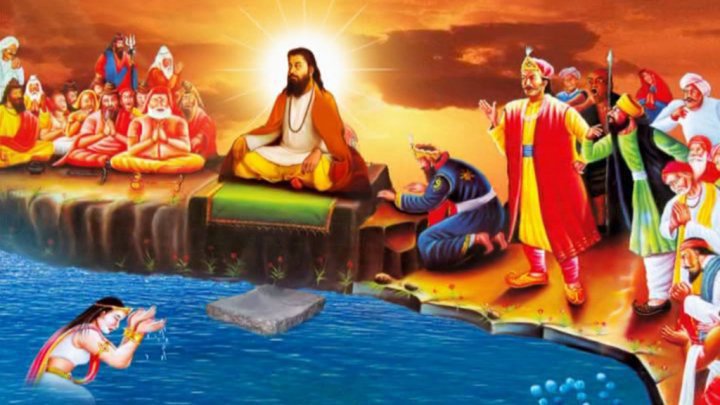
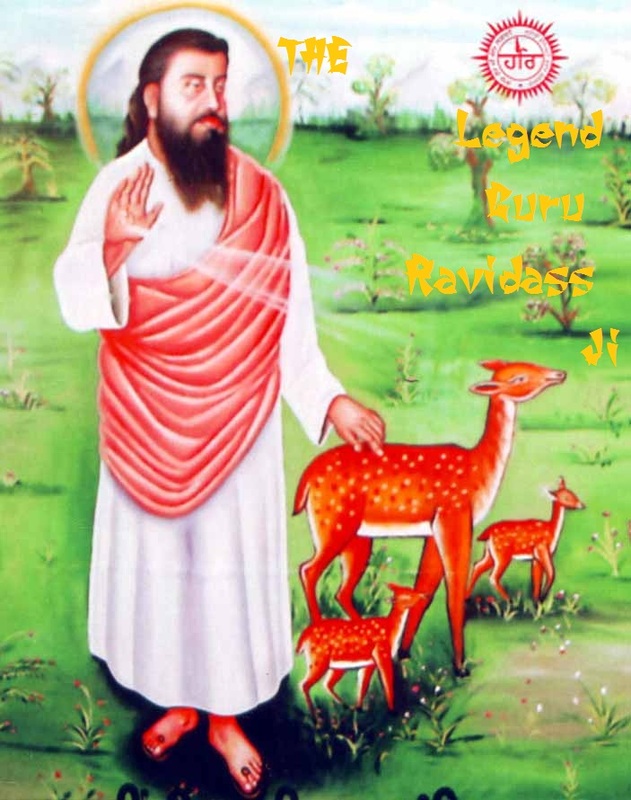


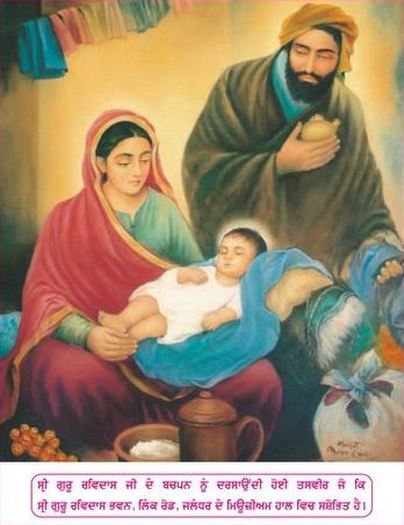

 RSS Feed
RSS Feed